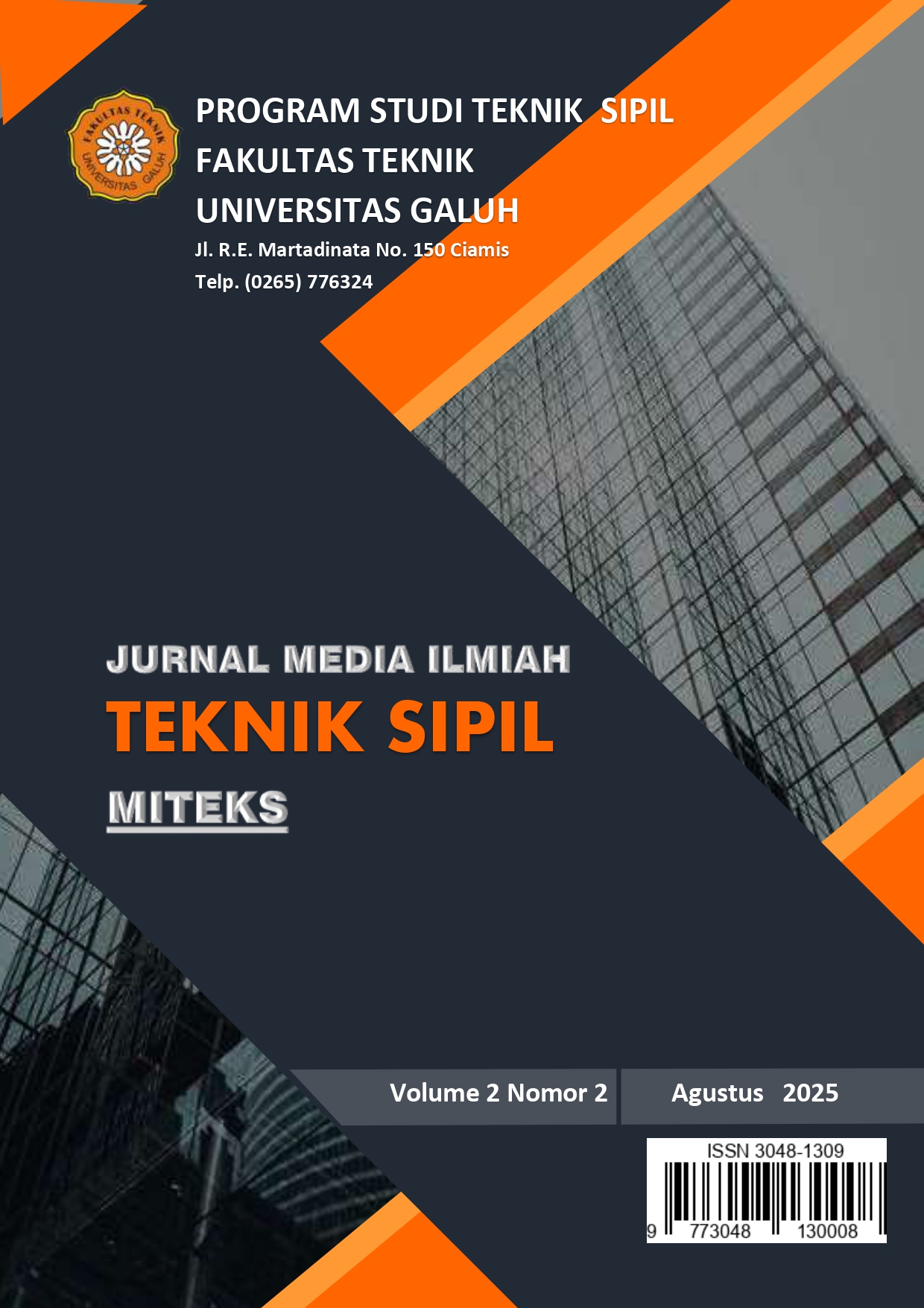Analisis Rasio Volume Kendaraan Terhadap Kapasitas Ruas Jalan Jakarta Timur Dengan Menggunakan Metode PKJI
(studi kasus jalan kesehatan pasar rebo)
DOI:
https://doi.org/10.25157/mediailmiahtekniksipil.v2i2.4392Kata Kunci:
Volume Lalu Lintas, Kecepatan, Kapasitas, PKJI, Tingkat PelayananAbstrak
Rads play a vital role in regional development, including reducing disparities between regions and ensuring equitable distribution of development results through the distribution of goods and services and have an important impact on the efficiency of economic distribution. Pasar Rebo District has an area of 12.98 km², with a population density of 18,650 people/km² and a total population of 242,073 people in 2023. East Jakarta as a whole has a population of 3,314,396 people. I
The ratio of vehicle volume to road capacity of the case study of Jalan Kesehatan, Pasar Rebo District, East Jakarta is an alternative road to Cijantung, Ciracas, and the flyover. Traffic on this health road section began to show signs of congestion due to high vehicle volume, an increase in the number of vehicles in the city that caused changes in traffic behavior, theoretically there is a fundamental relationship between traffic flow, speed, and density.
The purpose of this study is to determine the level of service of the Health road section. The method used in this study is the survey method, namely conducting analysis and using the 2023 Indonesian Road Capacity Guidelines (PKЛ).
Based on the analysis results, it is known that the busiest traffic volume value occurred on T on Monday, July 22, 2024 at 18.00-19.00 of (Q) 1893.9 pcu/hour with a free flow speed of 40.5428 km/hour and a health road capacity of 2330.7648 pcu/hour, which means that the capacity and traffic flow of this health road result in a decrease in the level of service. So the average degree of saturation (DJ) is 0.8 seconds/pcu, so it can also be seen that the level of service of the health road in Pasar Rebo District, East Jakarta is at level D.













